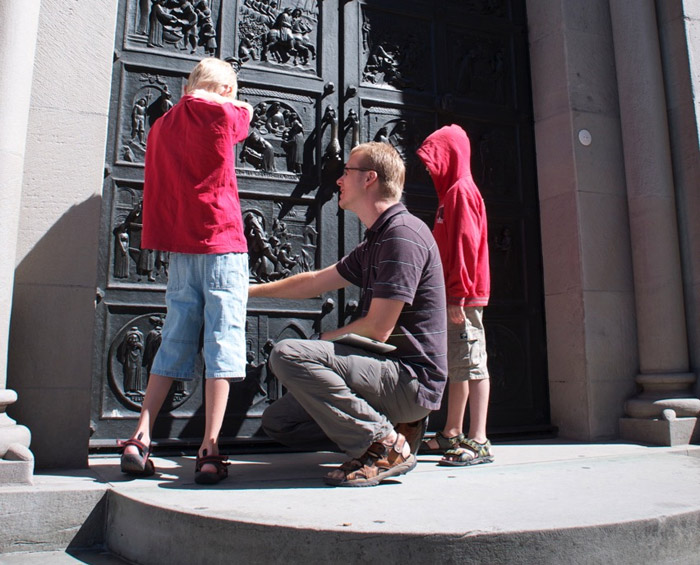A museum or historic site visit can be memorable, great for well-being and learning as well as providing a special bond between friends and family. My family and I still talk about the sites we have visited around Canada and the world, and what we learned continues to shape and strengthen us today.
Historic site visits leave an indelible mark with lasting memories that we can hold and share with loved ones. We often gravitate to entertainment, but even a sporting event can quickly become disappointing and forgettable – remember those Toronto Blue Jays who just got into the playoffs and then were swept in the wild-card round – again? My children and I will never forget the Grossmünster church in Zurich where Anabaptism began, touching the bronze murals that tell our story on its towering doors, seeing the courthouse down the street where many were sentenced to death, then seeing the canal where they were drowned. Historic sites can shock, inspire, and enlighten us – such visits change you.
At Mennonite Heritage Village (MHV) we have over 30 heritage buildings and monuments and two major galleries. How do you take it all in? I recently visited 12 historic sites and museums in Ottawa in three days. Here is my top tip for making the most of your museum visit: ‘float and flit like a hummingbird.’ When you find something that nurtures you, stay with it for a while. If it doesn’t attract you, keep moving until something does. It is called ‘free-choice learning,’ that individuals are self-motivated to learn about subjects in which they are most interested. Museums and their layouts are some of the best places for this type of super-charged learning.
This float and flit like a hummingbird approach is why many museum websites have a ‘plan your visit’ tab. You can’t see everything at a museum, so it is good to look at the layout and prioritize where you spend your time and what to skip. It is also great if you can do a little research on the topics that interest you before going to the museum. At the National Gallery of Canada, I spent most of my time marvelling at the subtle creativity of Monet and the use of Van Gogh’s light. When I came to the modern art section, my floating changed to flitting.
Sometimes there will be unexpected curiosities that spark your imagination. Be intentional about staying with that spark to see if it becomes more. Usually, it will be something you are already familiar with (hence the tip to do some prior research), but if you float long enough, it will take your understanding to a new level.
As I walked through the Canadian War Museum, I noticed that the development of a gun that could reliably fire sustained bursts made a dramatic difference in warfare. I went back to an earlier Gatling gun and a cannon before that. Later, when I came across a newer version of that gun that soldiers could shoot from their shoulders in the trenches, I had to marvel and despair about how good we have become at killing. I lingered again when I saw Hitler’s black parade car. How was it for the German crowds to see that car going by, what about the Jews in that crowd? Heavy stuff for this hummingbird to ponder.
Finally, please don’t get this tip mixed up with Muhammad Ali’s phrase, ‘Float like a butterfly and sting like a bee,’ as we don’t want anyone punching our precious panels!




